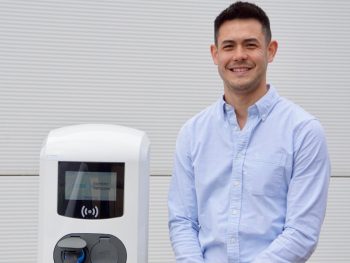Adam Hall, head of electric vehicles at Drax EV, dives into the whole debate around fast vs slow chargers and says that in many cases slow chargers are actually sufficient.

As the UK works towards its net zero goals, electric vehicles (EVs) are more crucial than ever. Emissions are a top priority item for policymakers and business managers alike. And for fleet managers, important decisions about their fleets’ fuel sources are imminent. After all, the 2030 ban on the sale of new petrol, diesel and hybrid vehicles is only nine years away.
Switching to EVs is one of the most impactful decisions a fleet manager can make. However, it’s important to fully understand your fleet needs before making the switch. EV charging stations, for example, require careful analysis of driver profiles to ensure you have the right infrastructure in place to support your fleet vehicles. EV charging stations come in slow, fast, rapid and ultra-rapid speeds. Choosing the right solution is essential to minimise upfront capital investment and reduce expensive vehicle downtime.
Given the reduced charging times, it’s tempting to view fast charging as the superior option. However, fast charging can require a significant financial investment, particularly if you’re looking to have multiple stations installed. And it many cases, slow charging – which is often considerably cheaper – is the better fit.
If you’re a fleet manager looking to make the switch, here are a few key points to think about.
Is speed a priority?
Your fleet usage will determine what type of charging you need. For example, if your fleet is in continuous use or your drivers need to travel long distances in short periods of time, fast charging allows you to keep your vehicles mobile without any long waits in between. Whereas, if your fleet only operates during working hours and sits idle overnight, slow charging might be the more sensible option.
With charging times of around 8 hours for a 7kW fast charger, and just 2.5 hours for a 22kW, fast chargers are a must for any business that runs a high-volume fleet.
Slow charging is commonly used at home and at workplaces. While they may take a little longer – typically around 10-14 hours – these are ideal for businesses whose fleets sit idle for longer periods of time, such as overnight, and can last the full day on one charge.
Besides being significantly cheaper than fast charging, slow charging also puts less demand on the grid, which helps with grid stabilisation. This will become increasingly important as more and more businesses make the switch to EV over the next few years. The National Grid predicts the need for 100 extra terawatt-hours to accommodate the 2030 ban. Slow charging can also help preserve your vehicles’ batteries through lower temperatures and a slower transfer of energy.
How to futureproof your chargers
Once you’ve decided on the right type of charger infrastructure for your business, you’ll need to work out how many you’ll need to support your fleet. Remember, even if you don’t have many (or any) EVs in your current fleet, they will undoubtedly become a part of your business in the next 10 years. And with the 2030 ban only nine years away, now is the time for fleet managers to think ahead.
Installing an EV charging point normally requires a skilled technician to carry out groundwork, including digging to lay the cables. Therefore, it makes sense to plan ahead to avoid unnecessary disruption in the future. While this may cost more upfront, it’ll save you time and money in the long run.
Current government subsidies and incentives are just one of the reasons to bring forward planned investments before infrastructure costs rise. Taking advantage of initiatives like the Workplace Charging Scheme and the government’s 130% super-deduction will allow you to start your journey towards electrification sooner rather than later. It’s likely that the government will reduce or remove these incentives in the future, so it pays to get in early.
Fleet managers should also plan regular system upgrades to lessen future costs. As fast charging infrastructure increases, transformer and distribution site upgrades will be necessary and are subject to price increases as the market expands. Considering future upgrades – and getting ahead of the crowd – will help balance your electric fleet’s budget.
A critical role
EV-friendly workplaces are essential in the roll-out of electric mobility, especially as more employees return to the office once restrictions are lifted. Not only do most people want to charge their private vehicles or company cars at work, but businesses with critical fleets will depend on having the right solutions in place. Careful consideration of what your fleet drivers need, what your business aims are, and how different chargers can support this, will inevitably save you a great deal of money and hassle down the line.

